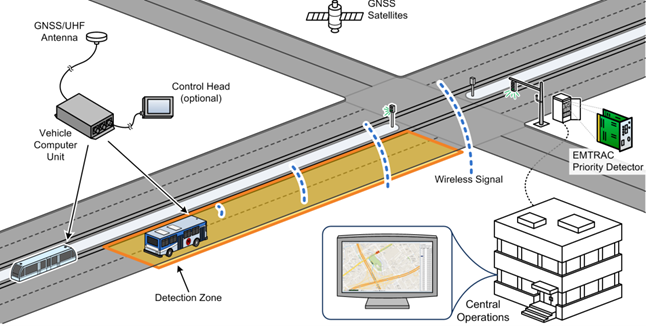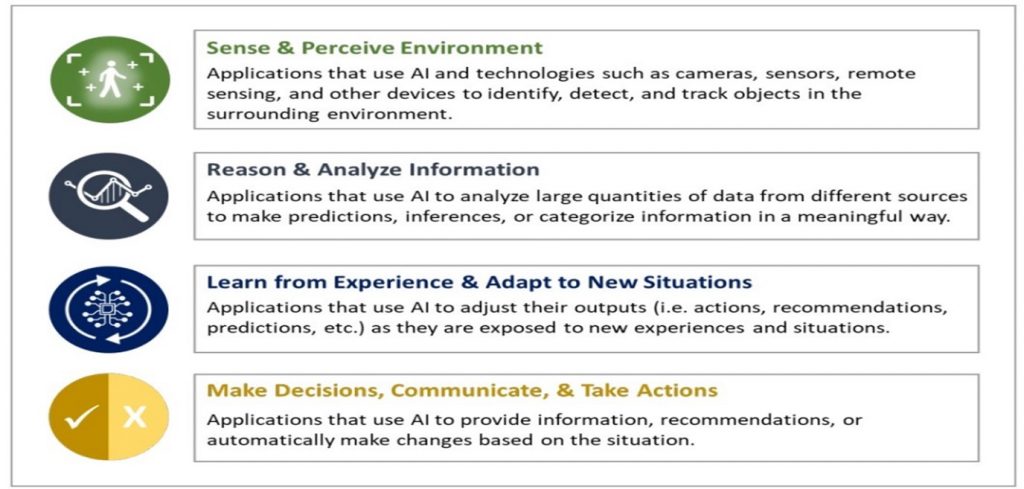By: Ines Aviles-Spadoni, M.S.

Artificial Intelligence (AI) is evolving rapidly and revolutionizing many sectors, with transportation engineering among the many discipline areas that are being shaped by this transformative wave. In transportation, AI has the potential to enhance operations, reduce traffic congestion, increase safety for pedestrians and bicyclists, and save public agencies money, among the many other benefits the technology offers.
However, the path toward broader AI adoption in transportation faces many uncertainties. This is why Dr. Xiang ‘Jacob’ Yan, an assistant professor at the University of Florida’s Department of Civil and Coastal Engineering, and his colleague at the Georgia Institute of Technology, Dr. Mike Hunter, embarked on a mission to unpack and identify the promises and challenges of AI in transportation through their STRIDE funded project titled “Promoting Equitable AI Applications in Transportation.”
“AI is likely to transform every major industry sector in the next several decades,” he said. ”I think transportation researchers and practitioners should be proactive in figuring out how to make AI use in transportation be beneficial to our society.”
Dr. Yan and his research team reviewed the use of AI applications across four key areas: 1) traveler decision on support tools, 2) transportation systems management and operations, 3) transit operations, and 4) asset management. Their literature review determined that AI applications hold promise in the transportation sector by improving these key areas. Still, others remain in the research and development phase, signaling ongoing innovations within the transportation sector.
“We see rapid growth of AI applications across many subfields of transportation, primarily with the goal of improving safety, efficiency, and traffic operations,” Dr. Yan said. “AI applications that primarily address equity issues are rare at this moment.”
To gauge how transportation professionals perceive AI, the researchers designed a survey that included questions about the impacts of AI, significant barriers to AI adoption, and the equity and ethical concerns related to AI. The respondents were also asked about their knowledge and training in AI.
“A majority of the respondents believe that AI will become integrated in transportation planning and engineering within the next 5 to 20 years,” Dr. Yan said. “They also said that AI will have many benefits in transportation, such as improving operational efficiency, reducing human error, and enhancing safety.”
The survey results indicate most transportation professionals are optimistic about the potential of using AI to advance transportation goals. However, they also showed skepticism surrounding AI’s ability to eliminate government decision-making bias and address social inequalities. For example, respondents expressed concern about potentially biased datasets that could contribute to social disparities and the limited training available for the ethics of AI in the transportation sector.
The researchers emphasize a dual approach to address the limited training availability for AI in the transportation workforce. The first approach involves students currently enrolled in engineering programs.
“Students should learn about the interdisciplinary nature of AI,” he said. “Also, by participating in activities such as apprenticeship programs, attending career fairs, and mentoring, these can also create a holistic approach to understanding the potential of AI applications in transportation.”
The second approach is focused on the labor force. The researchers believe employers should provide more AI-related training to all of their employees to prepare them for a better AI future. To do this, public funds should be made available for these workers through community colleges and vocational schools to ensure a more equitable training development.

Nevertheless, Dr. Yan’s work is not finished. He and his colleague, Dr. Hunter, have identified three areas where more work needs to be done: 1) investigate sources of data biases to address the potential of AI to contribute to transportation inequities, 2) identify AI applications that can address the transportation needs of a community, 3) develop a practical guide for transportation professionals for deploying AI applications while promotion equality.
Now more than ever, as AI reshapes the transportation landscape, transportation researchers and practitioners will need to take proactive measures to ensure a future where the benefits of AI will be accessible to everyone.
